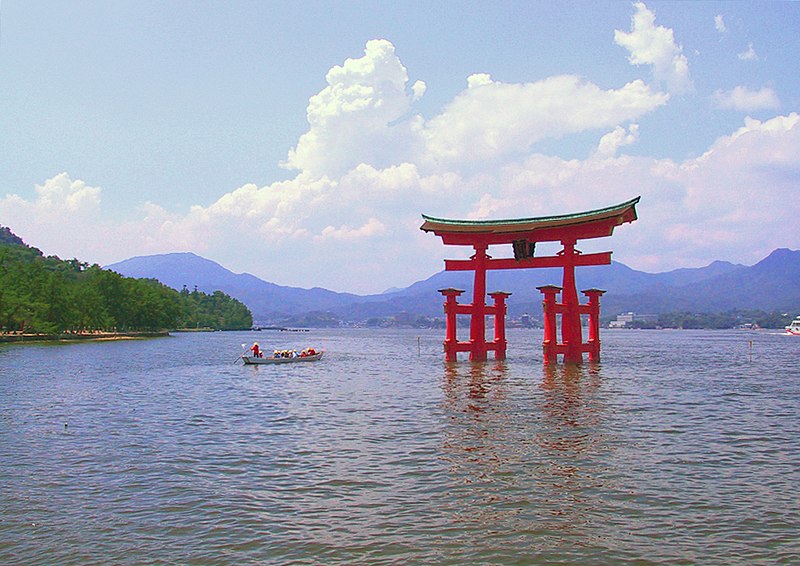World Heritage Sites

In 1972, UNESCO ratified a measure to create a label that would preserve a variety of manmade - and, eventually, natural sites - across the globe, based on a variety of important criteria, generally culturally related. Some of the more prominant of the 830 World Heritage Sites include Memphis and its Necropolis (which include the Pyramids of Giza), The Great Wall of 10,000 Li (China), Venice Italy, of course, the Statue of Liberty (no joke), and the Shinto Itsukushima Shrine (pictured). The following are the credentials:
"Until the end of 2004, there were six criteria for cultural heritage and four criteria for natural heritage. In 2005, this was modified so that there is only one set of ten criteria. Nominated sites must be of "outstanding universal value" and meet at least one of the ten criteria.
Cultural criteria
* I. "to represent a masterpiece of human creative genius";
* II. "to exhibit an important interchange of human values, over a span of time or within a cultural area of the world, on developments in architecture or technology, monumental arts, town-planning or landscape design";
* III. "to bear a unique or at least exceptional testimony to a cultural tradition or to a civilization which is living or which has disappeared";
* IV. "to be an outstanding example of a type of building, architectural or technological ensemble or landscape which illustrates (a) significant stage(s) in human history";
* V. "to be an outstanding example of a traditional human settlement, land-use, or sea-use which is representative of a culture (or cultures), or human interaction with the environment especially when it has become vulnerable under the impact of irreversible change";
* VI. "to be directly or tangibly associated with events or living traditions, with ideas, or with beliefs, with artistic and literary works of outstanding universal significance. (The Committee considers that this criterion should preferably be used in conjunction with other criteria)";
Natural criteria
* VII. "to contain superlative natural phenomena or areas of exceptional natural beauty and aesthetic importance";
* VIII. "to be outstanding examples representing major stages of earth's history, including the record of life, significant on-going geological processes in the development of landforms, or significant geomorphic or physiographic features";
* IX. "to be outstanding examples representing significant on-going ecological and biological processes in the evolution and development of terrestrial, fresh water, coastal and marine ecosystems and communities of plants and animals";
* X. "to contain the most important and significant natural habitats for in-site conservation of biological diversity, including those containing threatened species of outstanding universal value from the point of view of science or conservation."





Post a Comment
<< Home